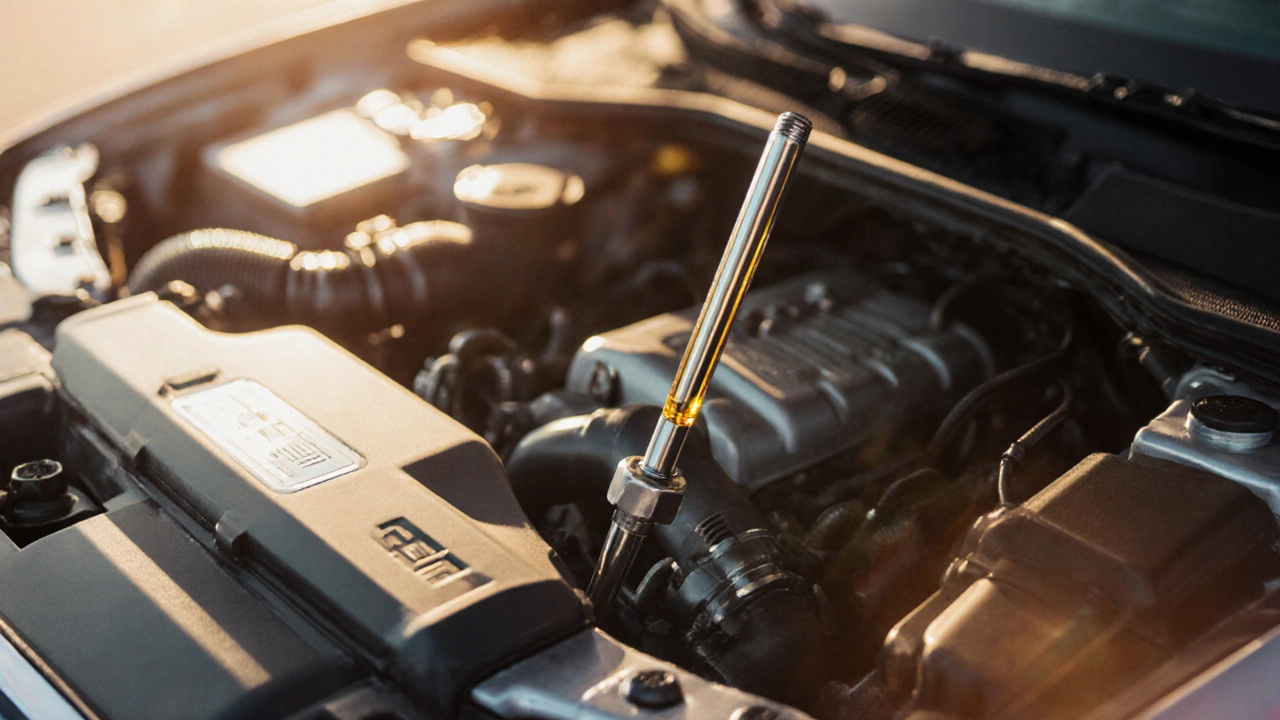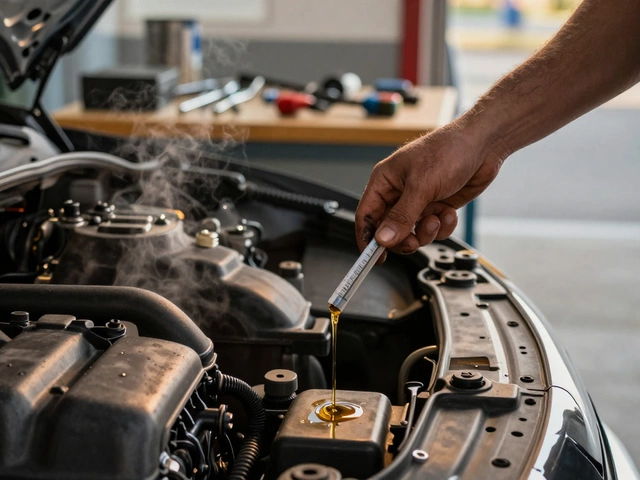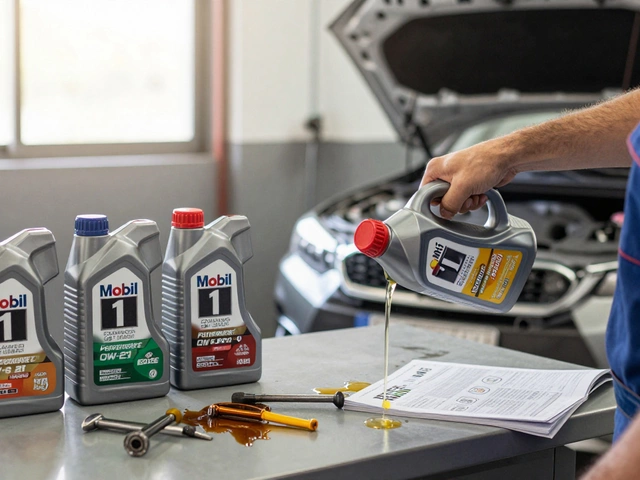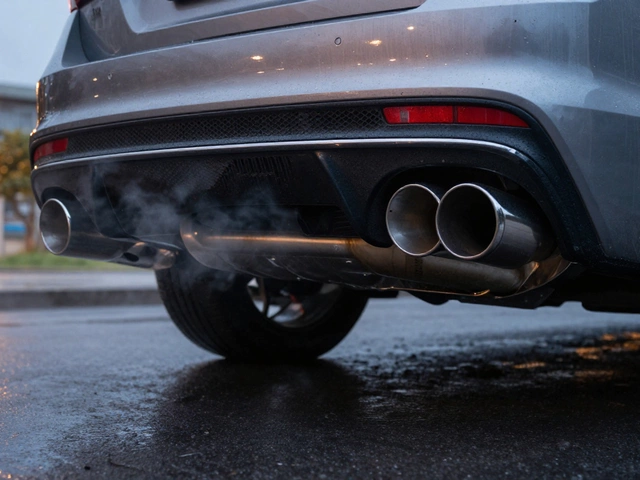Oil Overfill Calculator
This tool helps you calculate the potential risks of adding extra engine oil based on your vehicle's specifications.
Oil Overfill Analysis
0%Adding quart(s) to a quart capacity engine results in a increase.
Recommended Action
Quick Takeaways
- Most passenger cars tolerate up to 0.5quart over the recommended fill, but a full extra quart can cause foaming and reduced lubrication.
- Over‑filling can raise oil temperature, trigger oil‑pressure warnings, and in severe cases damage seals or the crankshaft.
- Check the dipstick on a level surface, wait a few minutes after the engine stops, and remove the excess with a pump or drain plug.
- Modern cars with electronic Oil Level Sensor (a sensor that measures oil height and alerts the driver) may flag overfill sooner than a manual dipstick.
- Prevent overfill by using the exact capacity listed in the owner’s manual and double‑checking the dipstick reading before topping up.
Understanding Oil Capacity and Tolerances
Every engine comes with a specified Oil Capacity (the total volume of oil the engine’s lubrication system can hold, usually measured in quarts or liters). The figure includes the oil that rests in the Oil Pan (the reservoir at the bottom of the engine that stores lubricating oil) and the amount circulating through the Oil Pump (the component that moves oil under pressure to critical engine parts). Most manufacturers publish a ‘fill‑to‑the‑line’ recommendation, but they also build in a small buffer-typically ±0.5quart-to accommodate temperature‑induced expansion.
That buffer isn’t a free‑for‑all. It’s designed for oil that expands as it warms, not for intentional over‑filling. Adding a full extra quart pushes the system beyond its engineered tolerance, especially in engines with tight clearances.
What Happens When You Add One Extra Quart?
Pouring an extra quart of oil into a vehicle that already sits at its correct level creates several chain reactions:
- Foaming: The crankshaft and rotating components churn the excess oil, trapping air bubbles. Foam has a much lower lubricating ability than liquid oil, which can lead to metal‑to‑metal contact.
- Higher Oil Temperature: More oil means the pump works harder to circulate it, generating extra heat. Hot oil thins out, reducing its film strength.
- Oil Pressure Sensor Triggers: The sensor may read a sudden spike, causing the dashboard warning light to flash. Some cars even shut down to protect the engine.
- Seal Stress: The increased volume pushes against gaskets and seals, especially the front main seal and valve cover gasket. Over time, this can cause leaks.
- Potential Crankshaft Damage: In extreme cases, foamy oil can’t sustain the load on the crankshaft bearings, leading to scoring or bearing failure.
Most of these effects develop gradually. You might not notice a problem until weeks later, when you see oil on the spark plugs or notice a drop in fuel efficiency.
Real‑World Effects on Different Engine Types
Not all engines react the same way to an extra quart. Here’s a quick look at three common setups:
- Inline‑4 gasoline engines (e.g., 2022 Toyota Corolla): Typically have a generous oil pan volume. A single extra quart may stay within the 0.5‑quart tolerance, but foaming can still occur if the engine runs at high RPMs.
- V6 gasoline engines (e.g., 2023 Honda Accord): Tighter clearances mean a higher risk of seal stress. Owners have reported oil leaks at the valve cover after overfilling by a full quart.
- Turbo‑charged diesel engines (e.g., 2024 Ford F‑150 Powerstroke): The oil also cools the turbocharger. Overfill can raise turbo temperatures, leading to premature wear of the turbine bearings.
These examples illustrate why the safe over‑fill window is often smaller than the manufacturer’s blanket tolerance.

How to Check and Correct Oil Level Safely
Whether you suspect an overfill or just want to double‑check, follow these steps on a flat surface after the engine has been off for at least five minutes:
- Pull the dipstick out, wipe it clean with a lint‑free cloth, and re‑insert it fully.
- Pull it out again and read the oil level. The mark should sit between the “LOW” and “FULL” indicators.
- If the oil sits above the “FULL” line, locate the Oil Drain Plug (a screw at the bottom of the oil pan that allows oil to be removed) or use a hand‑pump suction tool.
- Remove oil in small increments (about 0.1quart), re‑check the dipstick each time until the level is within the proper range.
- Start the engine, let it run for a minute, then re‑check the level. This lets the oil circulate and settle, confirming the final reading.
Modern cars with an electronic Oil Level Sensor will also display a warning if the level is too high. In those cases, the sensor often overrides the manual dipstick, so trust the dashboard alert.
Preventing Overfill: Best Practices
- Read the Owner’s Manual: It lists the exact oil capacity and the recommended oil viscosity (e.g., 5W‑30).
- Use a Funnel with a Stopper: Some funnels have a built‑in shut‑off valve that prevents excess flow.
- Pour Slowly: Add oil in 0.25‑quart increments, checking the dipstick after each addition.
- Account for Temperature: Warm oil expands about 3-4% compared to cold oil. If you fill on a hot engine, you may need slightly less oil.
- Keep a Small Pump Handy: A hand‑pump or turkey baster makes it easy to remove a little excess without draining the pan.
When Overfill Can Cause Damage - Warning Signs
Even if you catch an overfill early, watch for these symptoms that suggest the extra oil has done harm:
- Oil Pressure Light Flickers - Indicates the sensor is reading abnormal pressure.
- Blue‑Grey Smoke from the Exhaust - A sign the oil is being burned, often due to foaming or excess oil reaching the combustion chamber.
- Oil Leaks - Noticeable puddles under the car, especially near the valve cover or oil pan gasket.
- Engine Knock or Rattling - May point to bearing wear caused by insufficient lubrication during a foamy episode.
- Decreased Fuel Efficiency - The engine works harder to pump thicker, overheated oil.
If any of these appear after an over‑fill, have a mechanic inspect the engine promptly.

Quick Reference: Oil Capacity vs. Overfill Impact
| Engine Type | Manufacturer‑Stated Capacity | Effect of +1qt | Risk Level |
|---|---|---|---|
| Inline‑4 (2.0L) | 4.5qt | ~22% increase; may stay within buffer for short term | Low‑Moderate |
| V6 (3.5L) | 5.7qt | ~18% increase; higher chance of foam and seal stress | Moderate |
| Turbo Diesel (6.7L) | 8.5qt | ~12% increase; turbo cooling compromised | High |
Bottom Line
One extra quart isn’t a catastrophic mistake for every car, but it isn’t a harmless “just a little more” either. The safest route is to stick to the exact capacity the maker specifies, check the level carefully, and correct any excess before the engine runs under load. Small missteps now can save you a costly repair later.
Frequently Asked Questions
Can I add oil after the engine has been running?
Yes, but only after the engine has been turned off and allowed to sit for a few minutes. This lets the oil settle so the dipstick reading is accurate.
Will an over‑filled engine burn more oil?
Often, yes. Excess oil can be drawn into the combustion chamber, especially if foaming occurs, leading to blue‑grey exhaust smoke.
Is it safe to use a hand‑pump to remove excess oil?
A hand‑pump is the easiest way to remove small amounts without draining the pan. Just ensure the engine is cool and the pump is clean.
Do synthetic oils reduce the risk of over‑fill problems?
Synthetic oils have better anti‑foaming additives, so they cope slightly better with extra volume, but the fundamental risks remain.
What should I do if my oil pressure light stays on after correcting the level?
Turn the engine off, let it cool, then re‑check the dipstick. If the level is correct and the light persists, have a mechanic inspect the pressure sensor and pump.











Write a comment